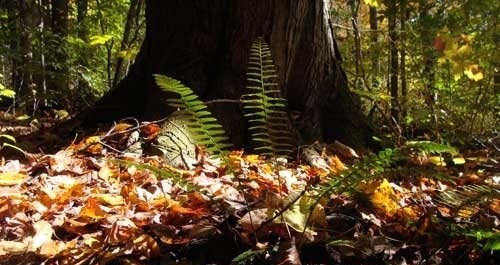Why do trees need to be fertilized?
To remain healthy and strong, and to have a good defense system against insects and diseases, trees, like us, need a good steady intake of the proper nutrients and minerals. In a trees’ natural forest environment, these nutrients are provided by the recycling of fallen leaves, plants and even animals, back into the forest floor. As these elements breakdown they feed the forest soil which in turn feed the roots of the trees and plants growing in that soil. Taken out of their  natural setting, trees are often deprived of these essential nutrients. Each fall, as we remove the fallen leaf litter and other organic matter from our lawns and planting beds, we are keeping the nutrients in those materials from cycling back into soil. just for example, annual raking and leaf removal takes about 1-3 pounds of nitrogen per 1,000 square feet out of the nitrogen cycle. Deep root tree fertilization is needed by many trees in the residential to replace these lost nutrients.
natural setting, trees are often deprived of these essential nutrients. Each fall, as we remove the fallen leaf litter and other organic matter from our lawns and planting beds, we are keeping the nutrients in those materials from cycling back into soil. just for example, annual raking and leaf removal takes about 1-3 pounds of nitrogen per 1,000 square feet out of the nitrogen cycle. Deep root tree fertilization is needed by many trees in the residential to replace these lost nutrients.
Trees placed into urban or residential landscapes may grow fine for many years but eventually, nutrient deficiencies will render these trees weak and susceptible to many health problems.
Symptoms that you may need to fertilize your trees.
- a slow rate and low amount of annual growth on twigs and trunk,
- smaller than normal foliage,
- off-color foliage,
- increased numbers of dead branches,
- tip-die back in branches,
- and increased rates of disease and insect problems.
Trees showing these symptoms may benefit from a deep root feeding. However, all of these signs of stress may be caused by other factors as well and fertilizing will not solve all of a trees health problems.
The most accurate way to determine a tree’s nutrient needs is to obtain laboratory analysis of the soil and the tree leaves. Three tests should be considered:
- foliar nutrient analysis to determine the nutrient content of the plant’s leaves
- soil analysis to determine soil nutrient levels, salt content, and levels of organic matter
- pH analysis to determine the acidity or alkalinity of the soil.
You can obtain these test from a local extension service in your county. You can also obtain laboratory testing from the agricultural department of most State Universities.
In our next post we will discuss what you need to know to decide what type of fertilizer your tree needs.



